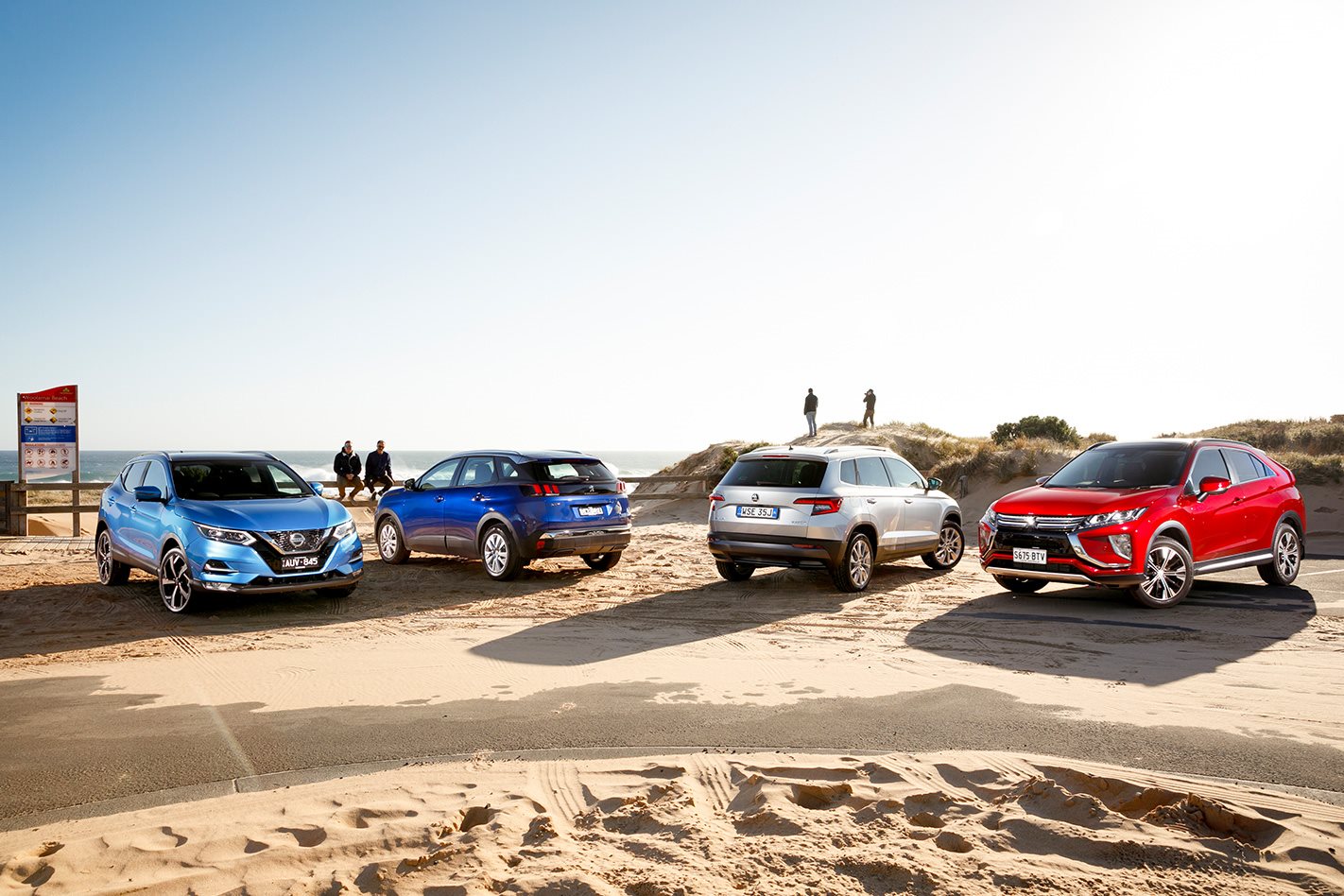FUN FACT: none of the models here would probably even exist if it wasn’t for Nissan and its obsession with crashing the cliquey European small-car set led by the Volkswagen Golf.
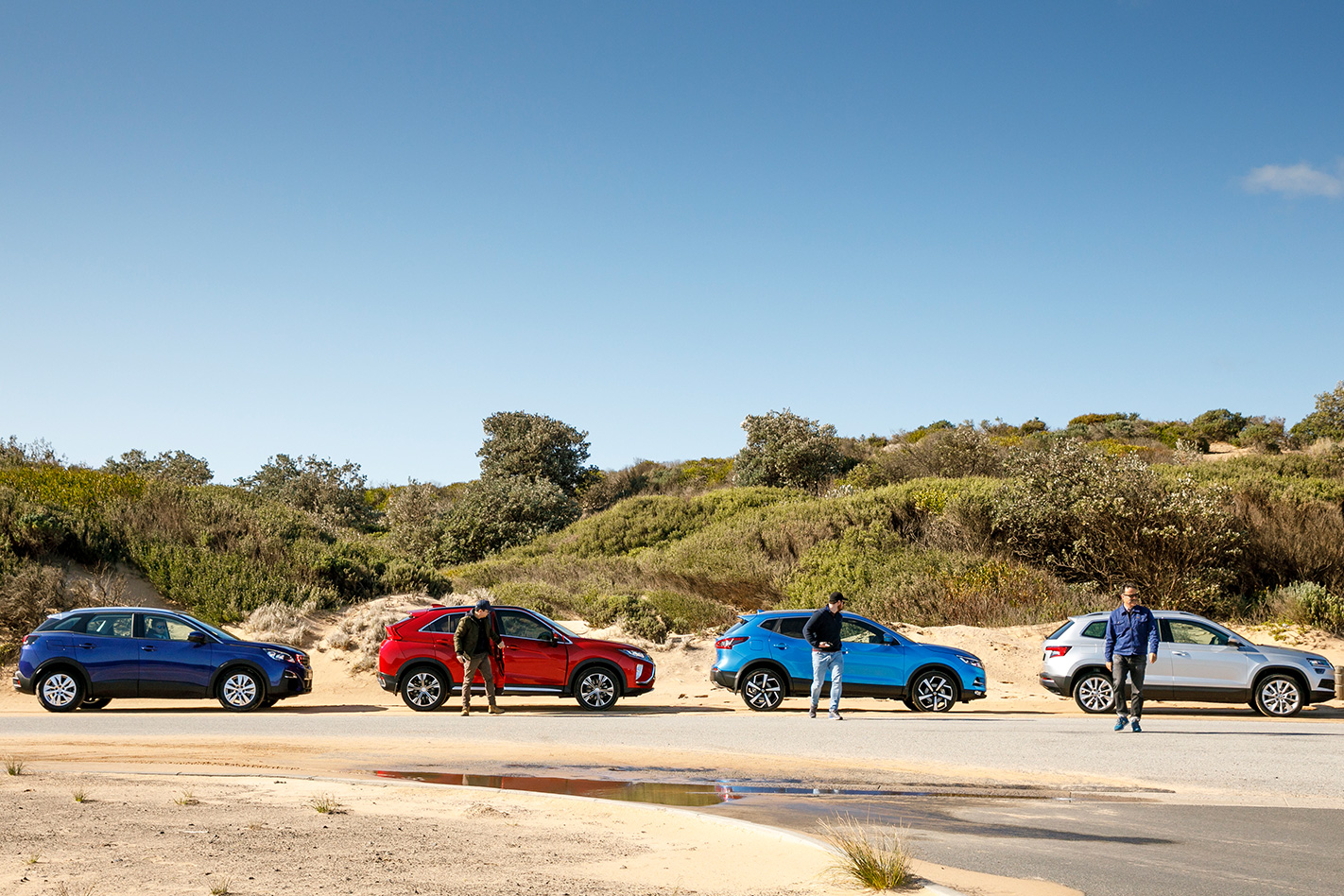
After decades of being left out in the cold with Sunny, Pulsar and Almera Golf-clones, the outta-leftfield Qashqai of 2007 broke through spectacularly by ushering in a slightly raised but still very hatch-like crossover alternative to the Wolfsburg icon. Designed, engineered and built in Britain expressly for Euro tastes, sales instantly went supernova, prompting a stream of copycat rivals, and the birth of a brand new SUV sub-class.
Since then, there’s been a total redesign (2014), while a facelift last year has brought in minor visual, engineering and specification improvements.
Can the Qashqai still cut it? To find out, we nabbed the $37,990 Ti flagship, bulging with gear exclusive to it in this test, such as Nappa leather, a fixed glass roof and 19-inch alloys, but conversely lacking Apple CarPlay/Android Auto. It’s also minus a turbocharger, relying instead on a 106kW/200Nm 2.0-litre atmo four dating back to the middle of the last decade. Why not the lusty 1.6-litre turbo fitted to Euro variants, Nissan? After all, most rivals feature forced induction, including the trio of petrol-powered front-drivers it faces here.
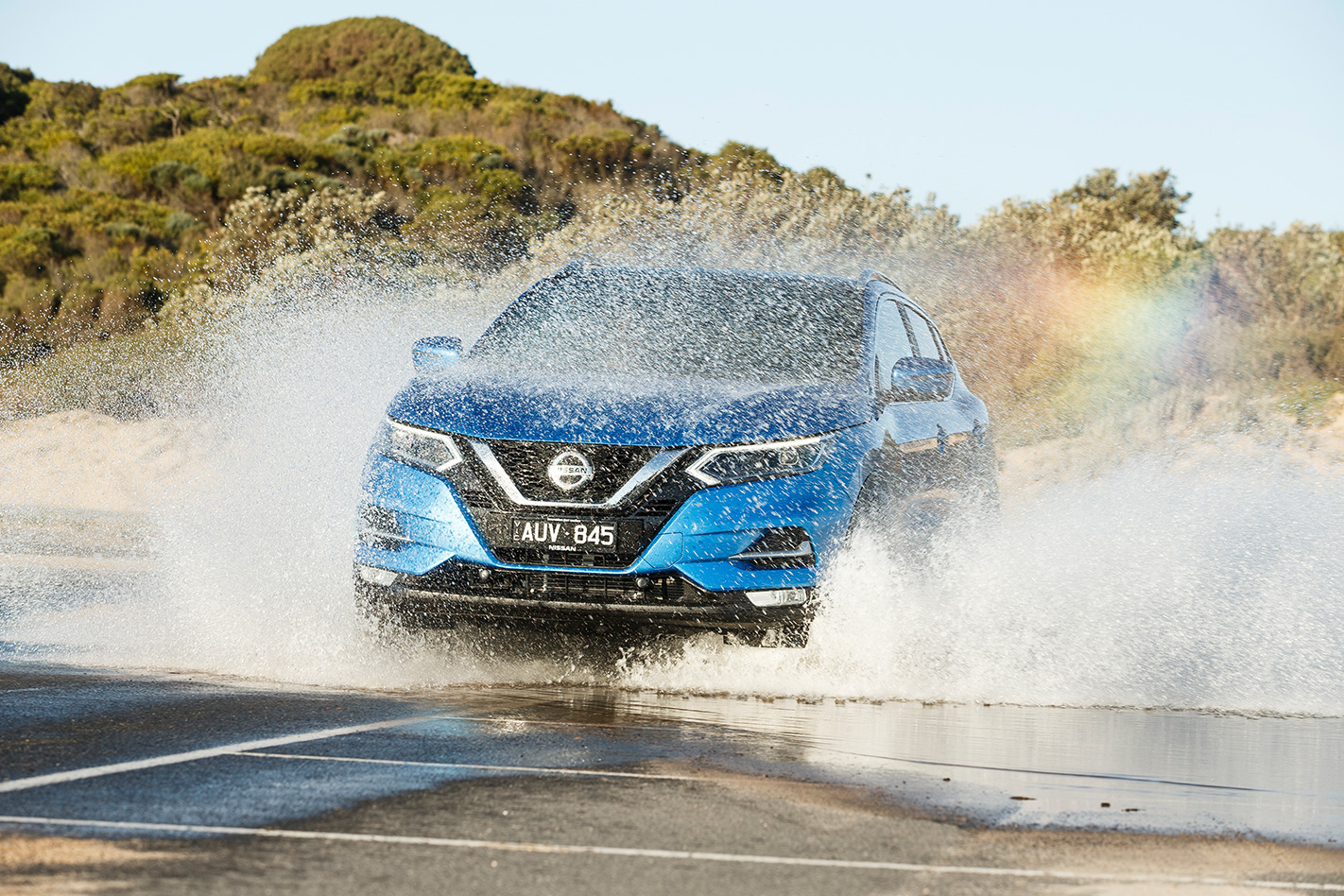
Freshest is the Skoda Karoq, the umpteenth offshoot from the Volkswagen Group’s MQB modular transverse architecture multiverse, and soberly styled successor to the late and likeable (if slightly loony) Yeti – a 2011 COTY finalist. Surprisingly, the Czech-made newcomer is larger every-which-way, something its crisp Audi-lite looks disguise quite cleverly, though it’s still within inches of the Nissan.
The sole variant for now is the front-drive 110TSI DSG from $32,290. Powered by an all-new 110kW/ 250Nm 1.5-litre four-cylinder turbo, this represents far-from-base-model positioning, bringing with it goodies such as adaptive cruise, driver fatigue detection, dusk-sensing auto high-beam lighting, keyless entry/start, rain-sensing wipers, rear-seat tablet holders and, uniquely, three individually removable rear seats dubbed Varioflex, in a continuation from the Yeti.
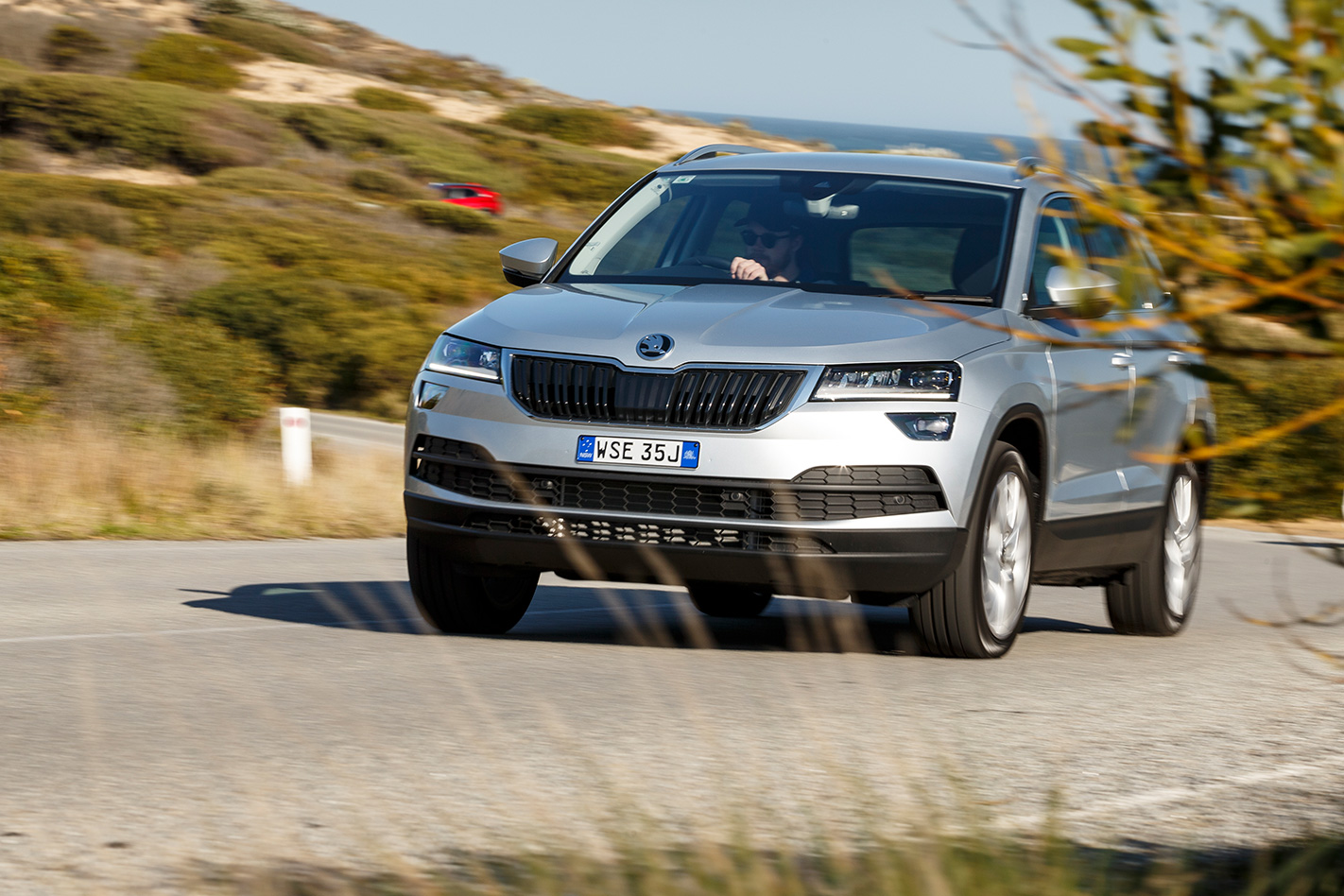
Our test Karoq cost $38,290, thanks to extras including a $1700 Travel Pack (adding lane-keep assist, blind-spot monitoring, rear cross-traffic alert, a powered driver seat with memory, heated front pews and auto folding and dipping mirrors) and $3600 Premium Pack (including adaptive LED headlights, leather, front sensors, this group’s only powered tailgate and 18-inch alloys). What’s missing is sat-nav and digital radio, for which you’ll need to stump up another $3200 for the Tech Pack.
Most of the aforementioned, along with a head-up display and opening sunroof (but again, no nav), makes up the $36,000, front-drive Eclipse Cross Exceed. The Japanese crossover certainly stands out, with bizarre styling suggesting a liaison between a Honda CRX and a Pontiac Aztec. The bigger burn though is the not-much-fun fact that this is probably the last-ever true Mitsubishi, since the company that brought us innovators such as the Lancer Evo, Galant, Starion, Magna and Nimbus is now under Renault-Nissan control. Real end-of-an-era stuff.
Speaking of oldies, the Eclipse Cross employs a modified version of the ancient ASX’s GS platform; at least its 110kW/250Nm 1.5-litre four-pot petrol turbo is box-fresh.
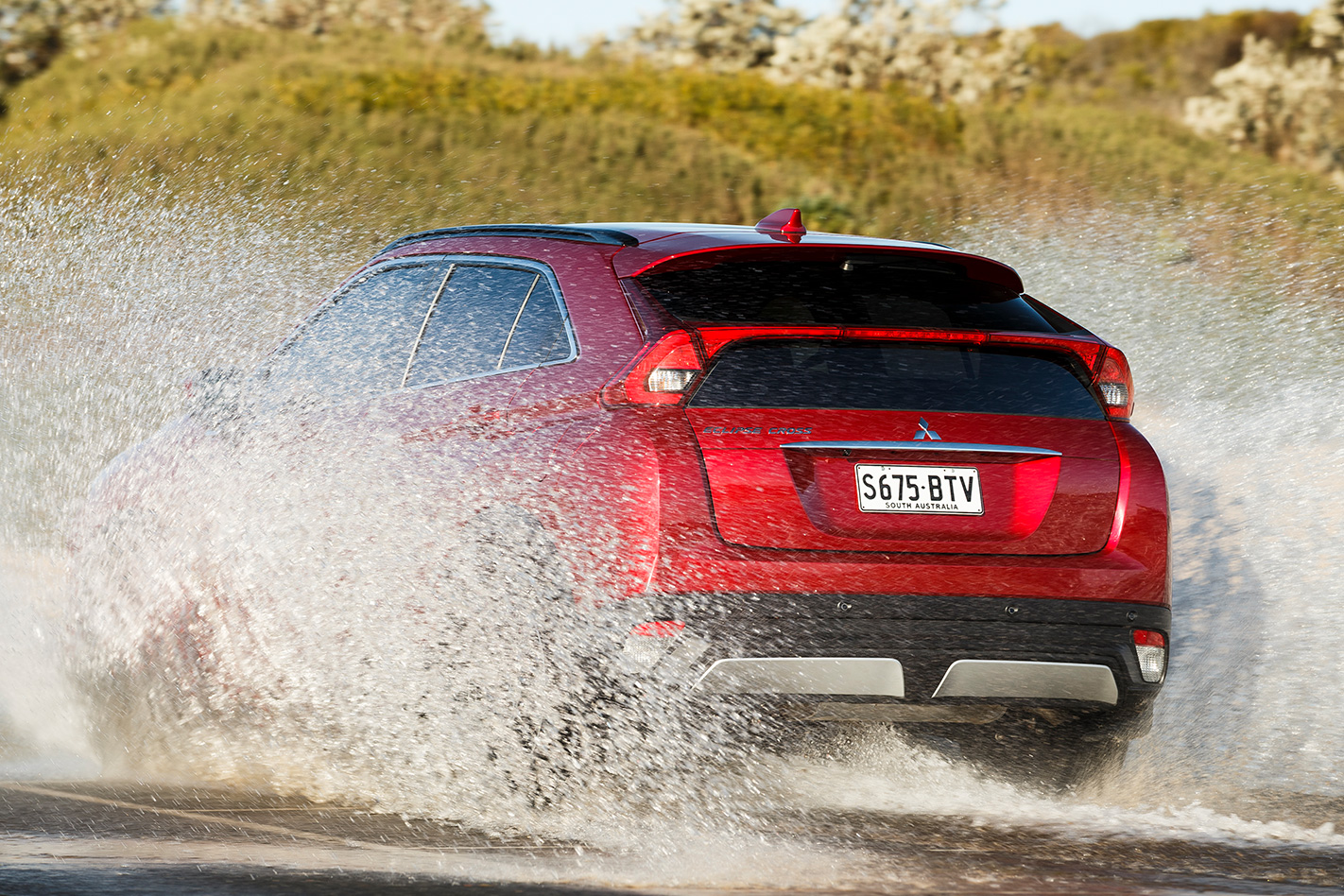
Finally, there’s Peugeot’s second-gen 3008. If ever proof was needed of the Nissan’s far-reaching influence, it’s this model’s 2016 switch from unloved MPV frump to sales-blockbuster crossover. Employing PSA’s lauded EMP2 architecture, the French SUV kicks off from $37,490 as a front-drive Active. While delivering the most power (121kW and 240Nm from a 1.6-litre turbo), it suffers from a few spec anomalies (and nauseating alloys). No adaptive cruise, blind-spot detection, lane-keep assist, auto high-beam, keyless entry/push-button start, leather, heated front seats or electric folding mirrors is a bad start. For these you’ll need the $40,990 Allure, which also nets an electric tailgate, auto parking, acceptable looking wheels and ultra-cool fabric dash inserts.
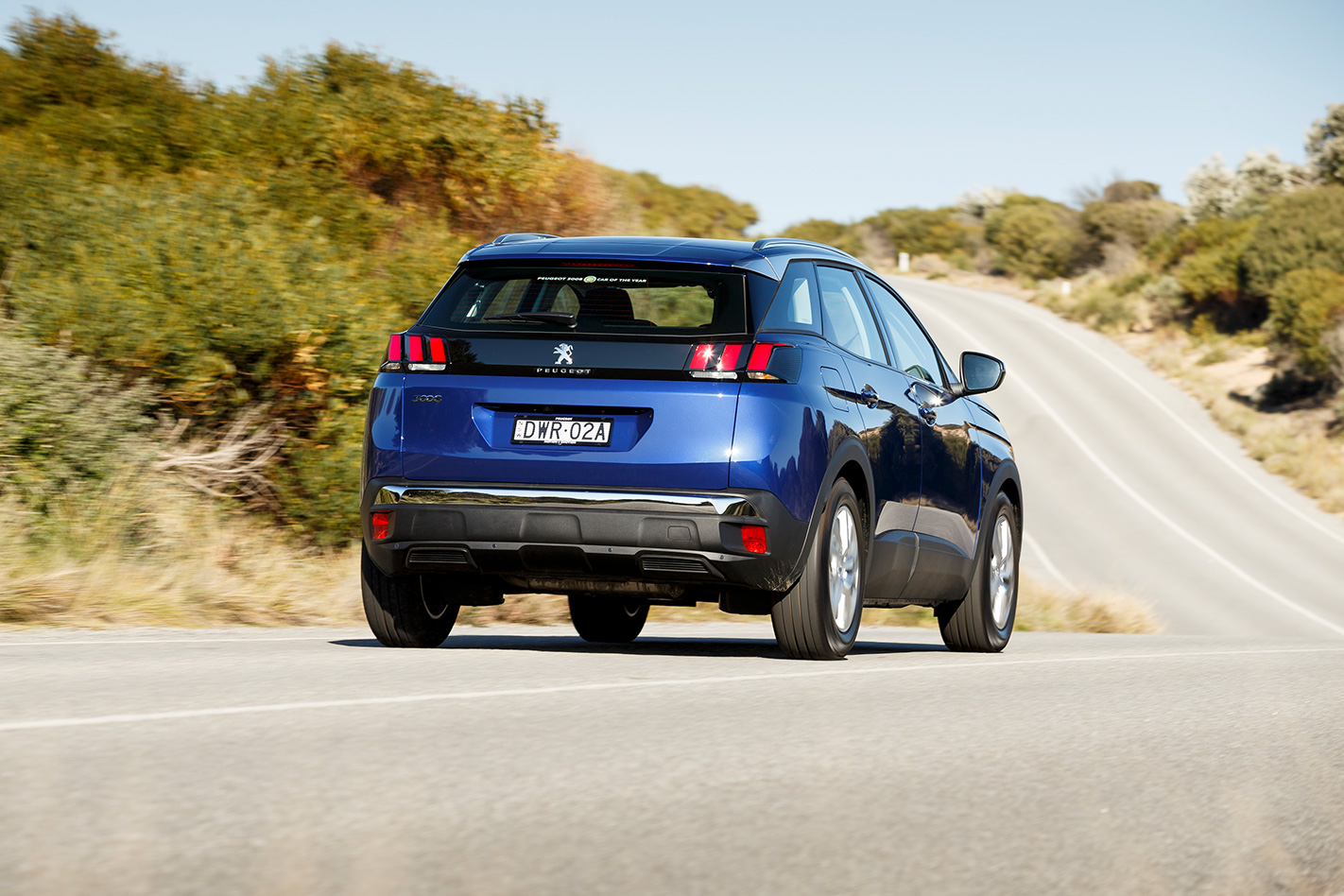
With dashes in mind, let’s see how the Qashqai’s atmo lump goes against the others’ turbos. With the continuously variable transmission calibrated to keep the engine in its torque band, off-the-line acceleration is pleasingly spirited. Up to about 40km/h there’s hardly anything in it, but beyond that, the Nissan falls away. The 80-120km/h overtaking increment, for instance, takes two seconds longer than the rest. And while CVT-induced rev-drone is mercifully contained, the raucous MR20DE four pot isn’t exactly cultured.
That would be forgivable if there was a sans-turbo fuel economy dividend, but the Qashqai was this test’s dipsomaniac, averaging 11.1L/100km. Double-whammy fail.
The Mitsubishi, too, let us down, returning a poor 10.5L/100km; that’s likely the upshot of being the porkiest here – by more than 125kg compared with the featherweight Frenchie.
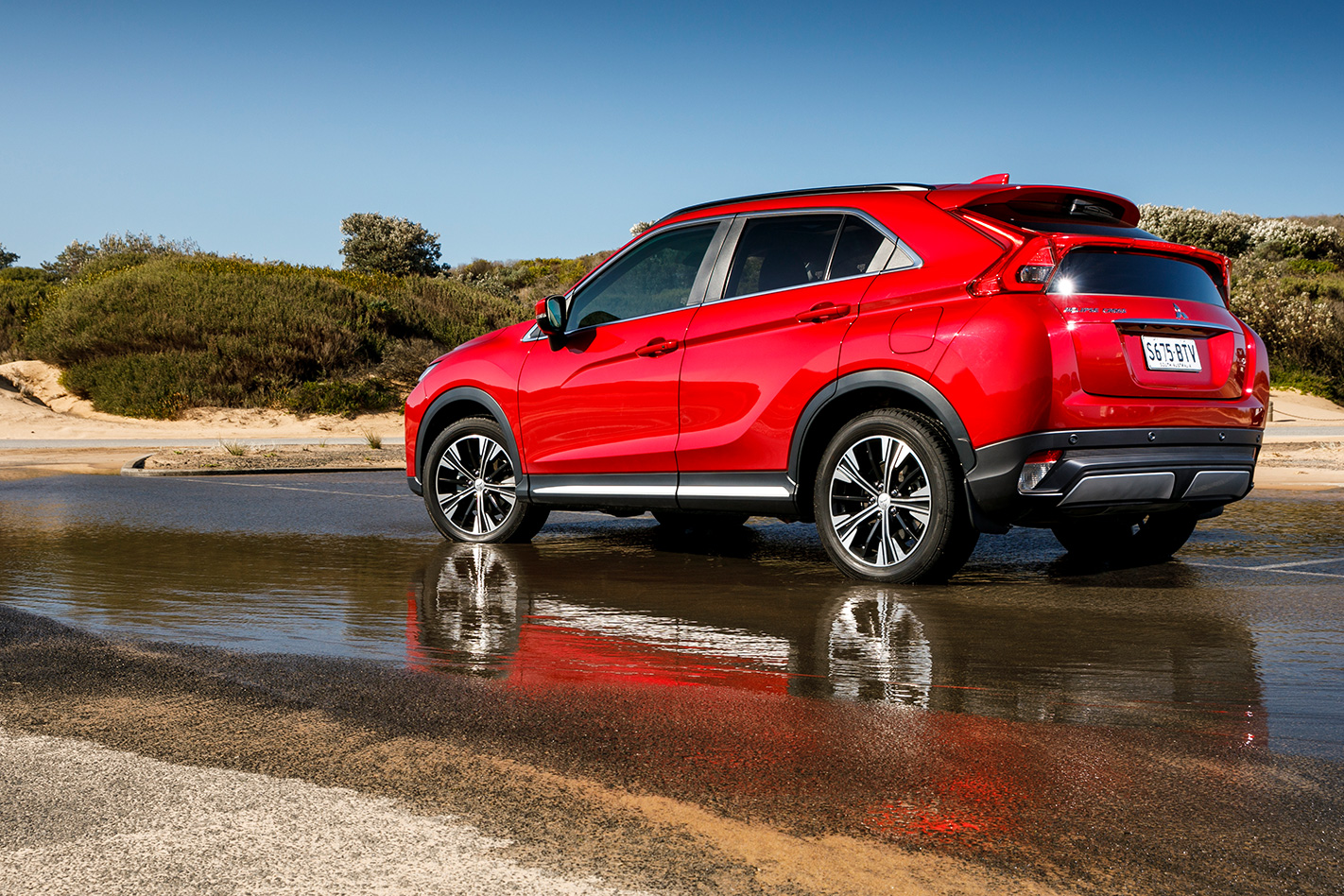
At least the Eclipse Cross is rapid and raring to go, right from the get-go, to the point where it will spin its Toyos even in the dry and scramble for traction in the wet. Anywhere up to 60km/h, the Mitsu’s extra muscle is palpable, aided in no small way by one of the smoothest and most unintrusive CVTs we’ve yet experienced, to streak ahead of both Qashqai and Karoq, while keeping the latter at bay to 100km/h. After that … well, all those extra kilos rear their efficiency-obliterating head again, with the Exceed slipping behind the Skoda.
Everything works better on a sensible diet, as the lithe Karoq demonstrated, being only 0.1s slower than the Eclipse Cross to the tonne, yet teasing out almost a whole litre per 100km more in the process. Like the Exceed, the 110TSI’s sparkling powertrain provides a solid and deep well of oomph to draw upon, at least after the inevitable DSG lag at take-off.
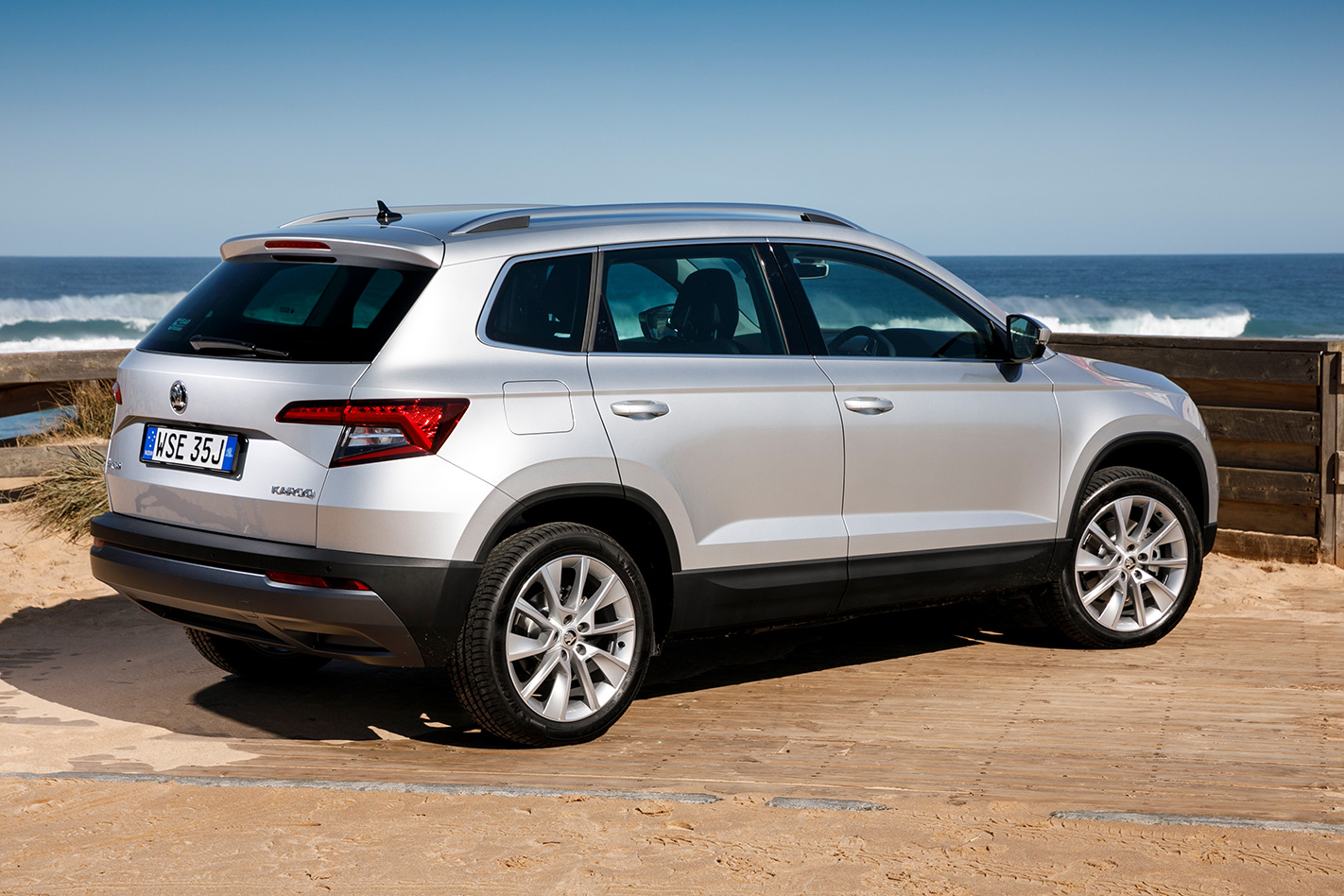
Super-slick gear selection ensures the Skoda is always in the right ratio at the right time which, combined with punchy throttle response across the rev bandwidth, makes it an effortless point-to-point performer. The Czech’s ability to power along at a cracking pace is a sheer joy.
Plus, the Skoda pipped the Pug in the braking stakes, pulling up a metre shorter at 35.4m from 100km/h. The Nissan was within cooee at 37.6m, however the Mitsubishi took an elongated 40.5m which is perhaps also to blame on the extra ballast.
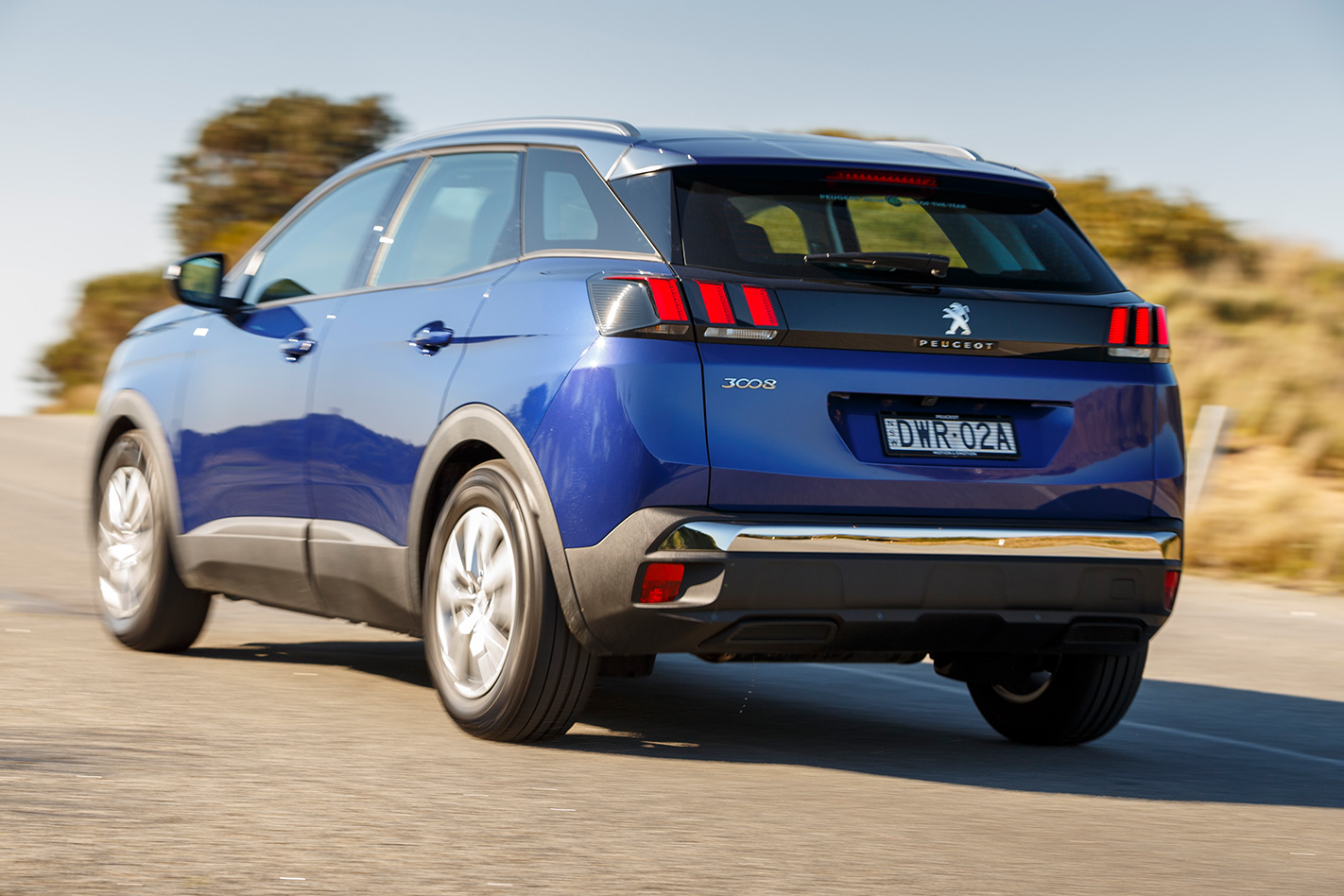
Yet… the Karoq’s numbers told a different truth, for in reality the barely run-in 3008, with the second-oldest engine on test and tres ordinaire Toyota-supplied six-speed torque-converter auto, proved brawniest, especially at the top end. By 130km/h the SUV from Sochaux was streaking ahead of the rapid Skoda by 0.6s, the Mitsu by nearly two seconds and the Nissan by a yawning four-seconds.
The 3008 also set the quartet’s dynamic benchmark, thanks to the sharpest and crispest steering, easily providing the most feedback and bite. It shrinks around the driver, with just enough rear end play for corners to be carved at a considerable clip while still feeling firmly rooted to the road. Are SUVs meant to be this entertaining? They are now.
The Skoda’s front end, too, is a fun yet faithful companion, seemingly magnetised to the driver’s chosen cornering line, backed up by a tautly sprung chassis and what feels like endless grip. That said, though, the steering intimacy and rear end fluidity that set the Pug apart are absent; that’s something we’ve noticed on every MQB model with the torsion beam rear suspension.
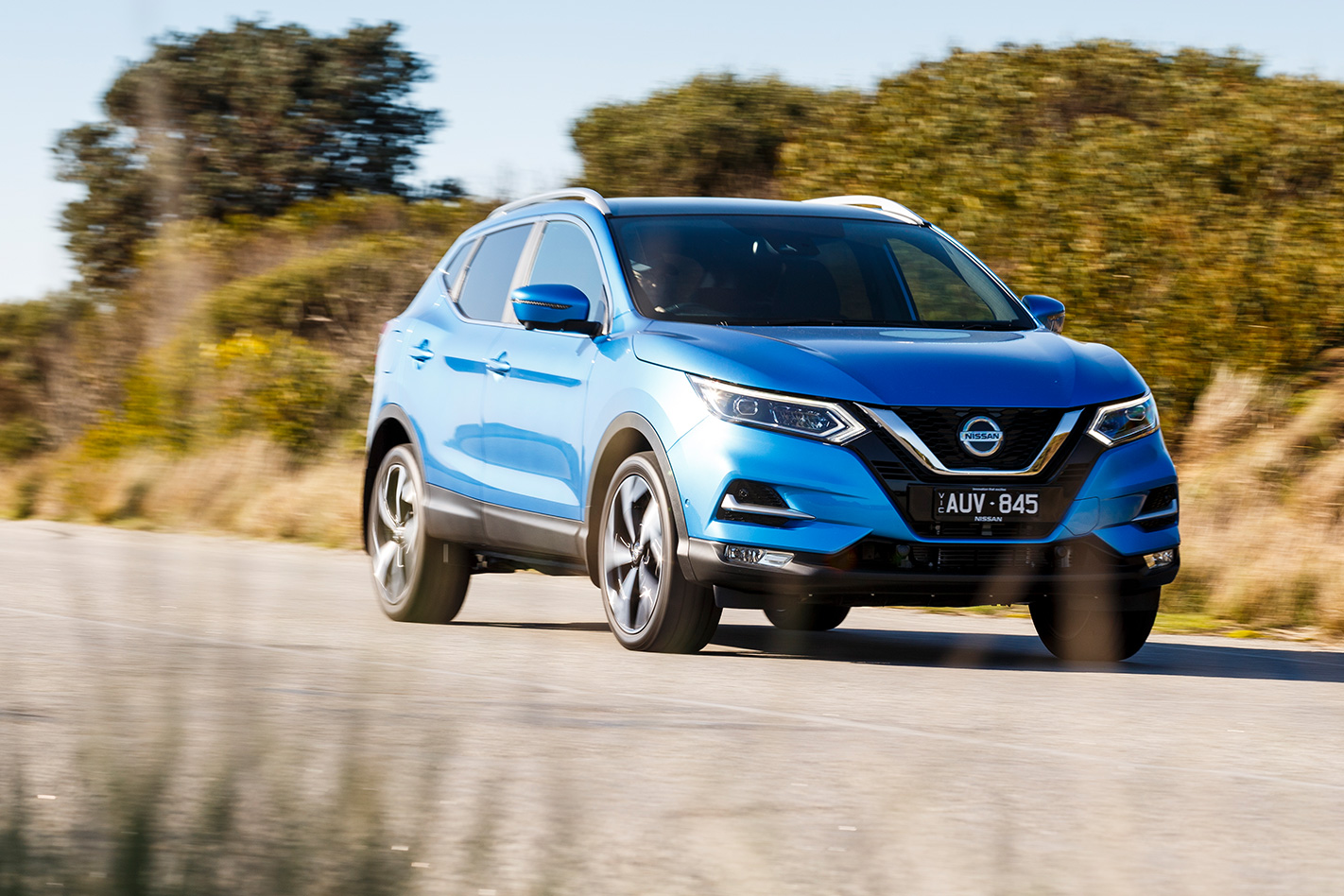
Rounded describes the Qashqai dynamic character, feeling planted and composed while still agile enough to engage a keen helmsman. The Ti’s 19-inch rubber probably helps. And the Eclipse Cross? On paper, it should have the goods to better the ageing Qashqai, with its more modern engineering and pedigree enriched through decades of rallying successes.
The truth, however, is heartbreaking in this last true Mitsubishi, for the Exceed’s steering is oddly numb, so at speed there’s a level of disconnection that can be disconcerting; this is exacerbated by a tippy-toed attitude brought on by tiresome and then quease-inducing amounts of vertical and lateral body roll. Just as frustrating is the endless and noisy suspension bump and thump on anything less than a smooth surface. The lack of a cohesive chassis tune is quite literally a shocker. With no comfort trade-off to compensate for its dreary handling, the Eclipse Cross is out of its depth. An Exceed AWD sampled earlier in the year on the same roads behaved far better, so was there perhaps something awry with our test car?
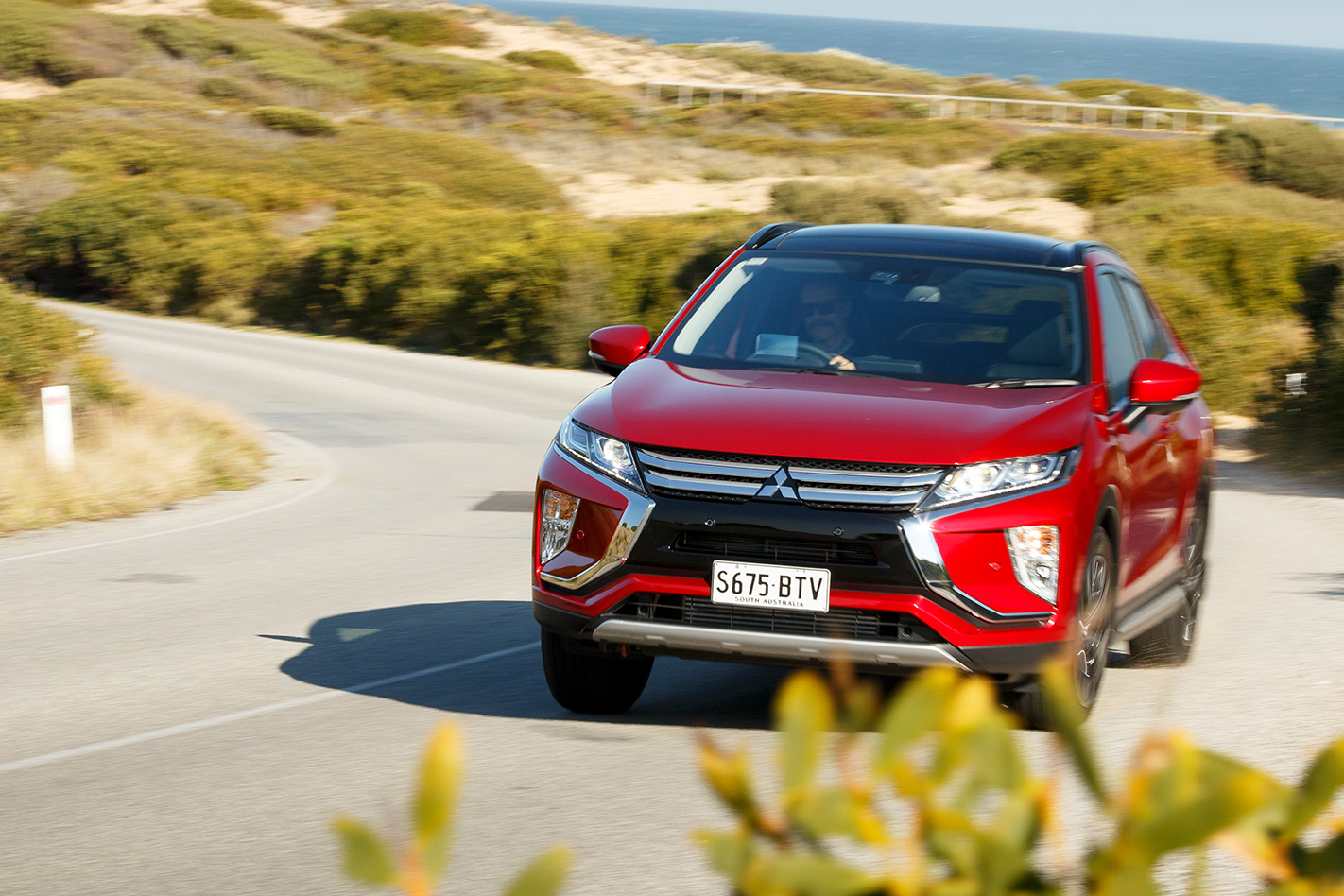
At the other end of the ride spectrum is the Peugeot, especially around town. No doubt the 3008’s smaller wheels (17s versus the others’ 18s or 19s) play a part here, but the Active’s levels of absorption and suppleness put it on top for refinement. The black art of French suspension isolation lives on!
In contrast, while the Skoda can be equally comfy, it can also struggle with small amplitude bumps at lower speeds, feeling at times too vocal and abrupt. Yet, with four adults on board at speed over our rough, ride-assessment road, the extra weight actually settled the Karoq and eased the edge out of the firmness. Over the same strip, the Peugeot’s body control wasn’t quite as level, but it remained a relaxing proposition. The Qashqai, too, proved remarkably well damped considering its massive wheels and tyres, smothering most road irregularities with agreeable aplomb. Maybe that’s Renault’s influence. All were welcome respites after the Mitsubishi’s dynamic maladies.
All four offer spacious and practical wagon-oid cabins, allowing easy entry/egress, more than sufficient space for four adults and reasonable luggage capacity. Note, though, that only the Euros provide HVAC outlets at the rear of the front centre console.
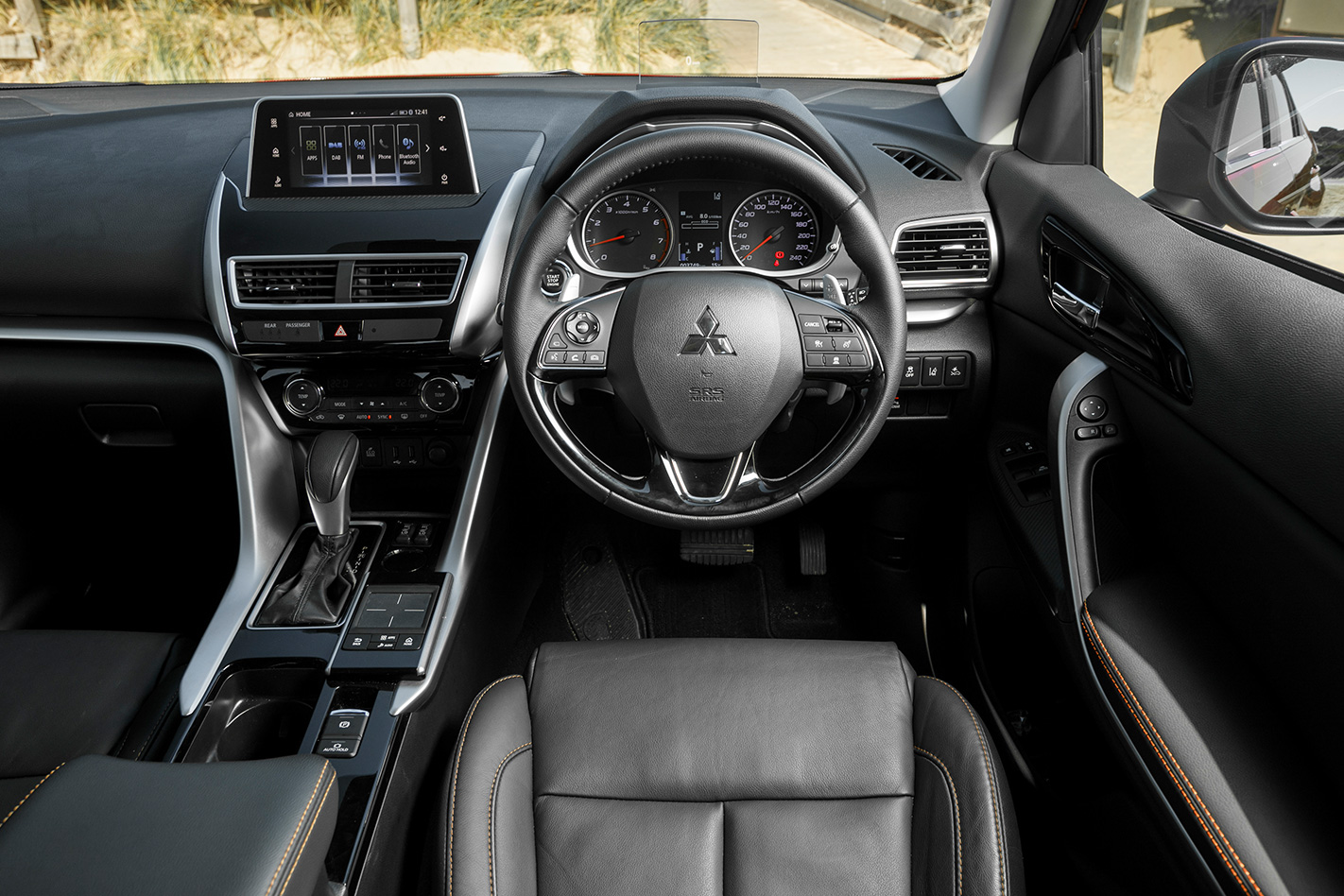
At least the Eclipse Cross recovers a little with an appealing and functional dashboard that is a big stride forward for the marque thanks to its layered design symmetry, easy usability, clear controls, ample storage and quality finish. Kids will most likely appreciate the high rear seating while there’s heaps of leg and foot room for bigger folk out back. But clangy column stalks, inadequate thigh support, a flat rear bench, limited rear headroom and a taillight design that bisects the rear-window view are drawbacks. Additionally, the twin-sunroof blinds and parcel shelf rattle, and the adaptive cruise control’s haphazard operation makes it seem like the driver is intoxicated.
After all that, the Qashqai feels like the Eclipse Cross antidote, with cushy seating, a low-slung dash, ultra-clear dials and what might be the coolest new steering wheel ever. Vision out is a little impeded by fat pillars and window-line up-kick, and the multimedia graphics seem comically outdated, but that glass roof’s ability to let light flood in can raise the lowest spirits on a dull day.
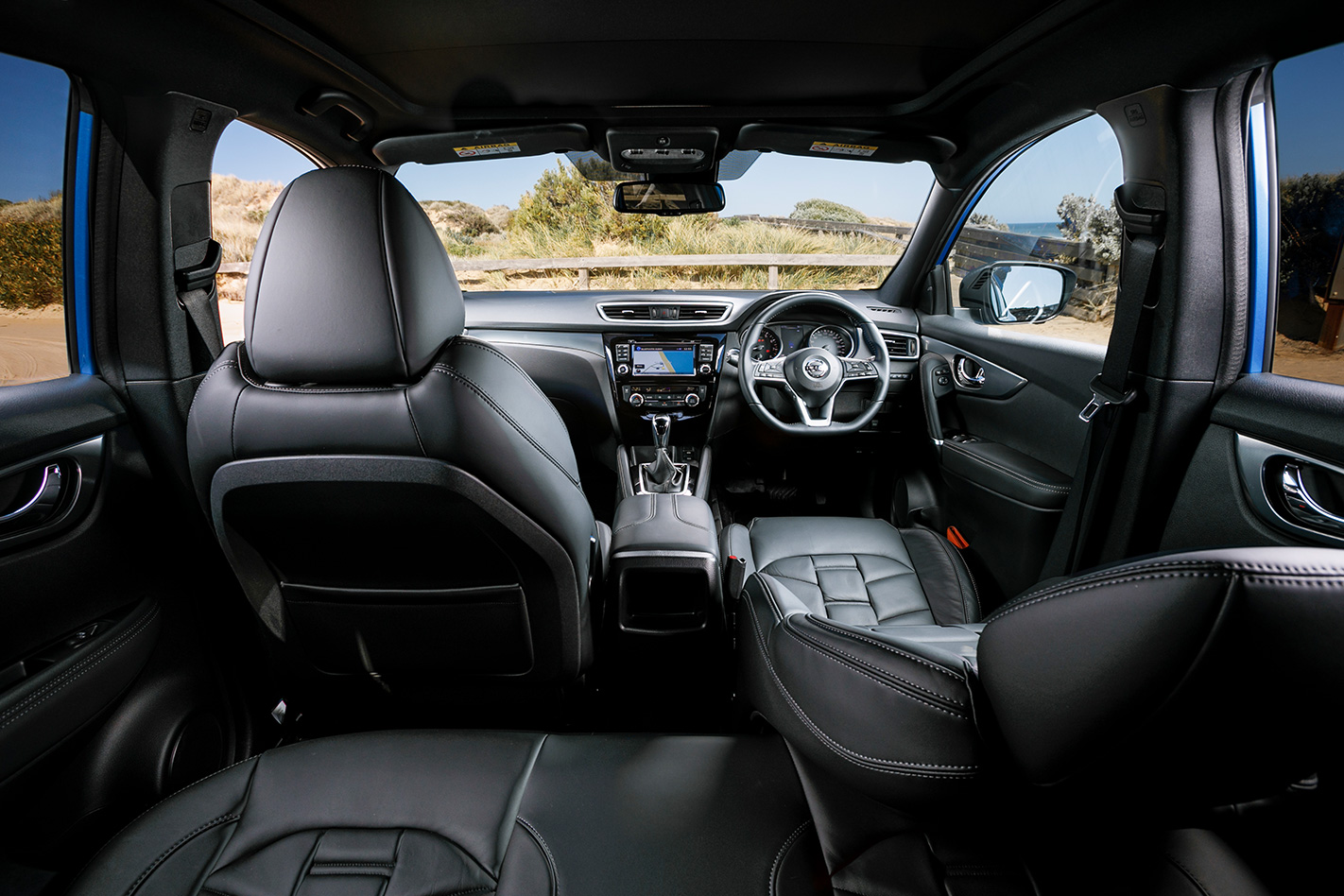
We’ll go out on a limb and declare the Karoq’s dash the best MQB-era effort yet, in terms of design and presentation this side of an Audi. With the Premium Pack, there’s a cohesiveness and elegance that elevates it even above lower-line Tiguans, while firmly supportive seats, deep glass areas and the modular convenience of the removable (if heavy) individual rear chairs is second-to-none. Which all makes the noisy, jittery urban ride all the more disappointing.
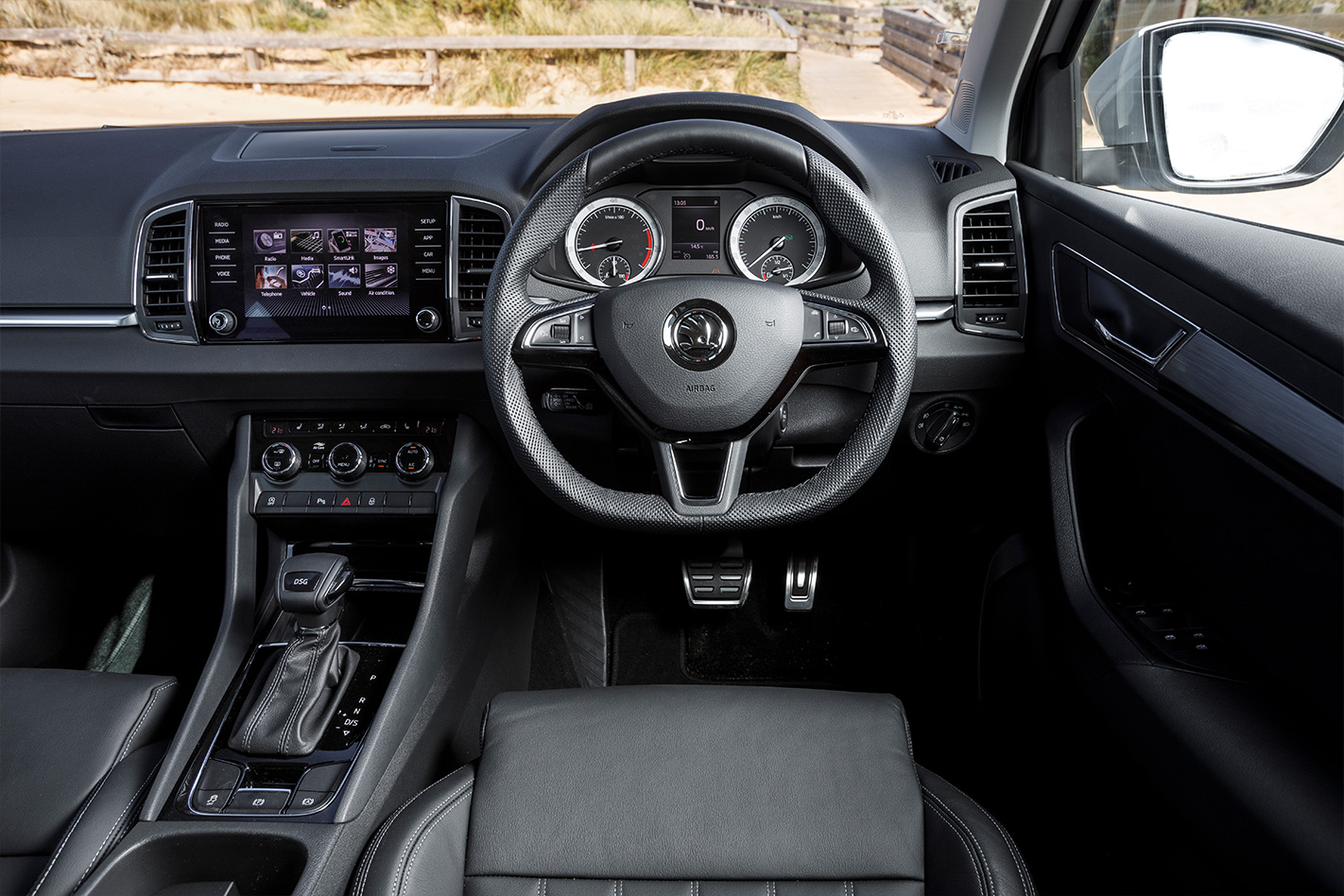
Finally, we come to the 3008. Even in basic Active guise, the Peugeot’s trim and design are imaginative, intriguing and yet, after a period of familiarisation, completely user-friendly. Changeable digital instrumentation, superbly supportive seats and muted noise intrusion elevates the experience to a premium level, though some cheap plastics and the odd rattle do let the side down.
By now it should be clear that the Mitsubishi finishes a resounding last, despite its newness, rousing performance and high equipment level. Sub-par handling and an ill-sorted ride means the Eclipse Cross Exceed front-driver feels dynamically half-baked.
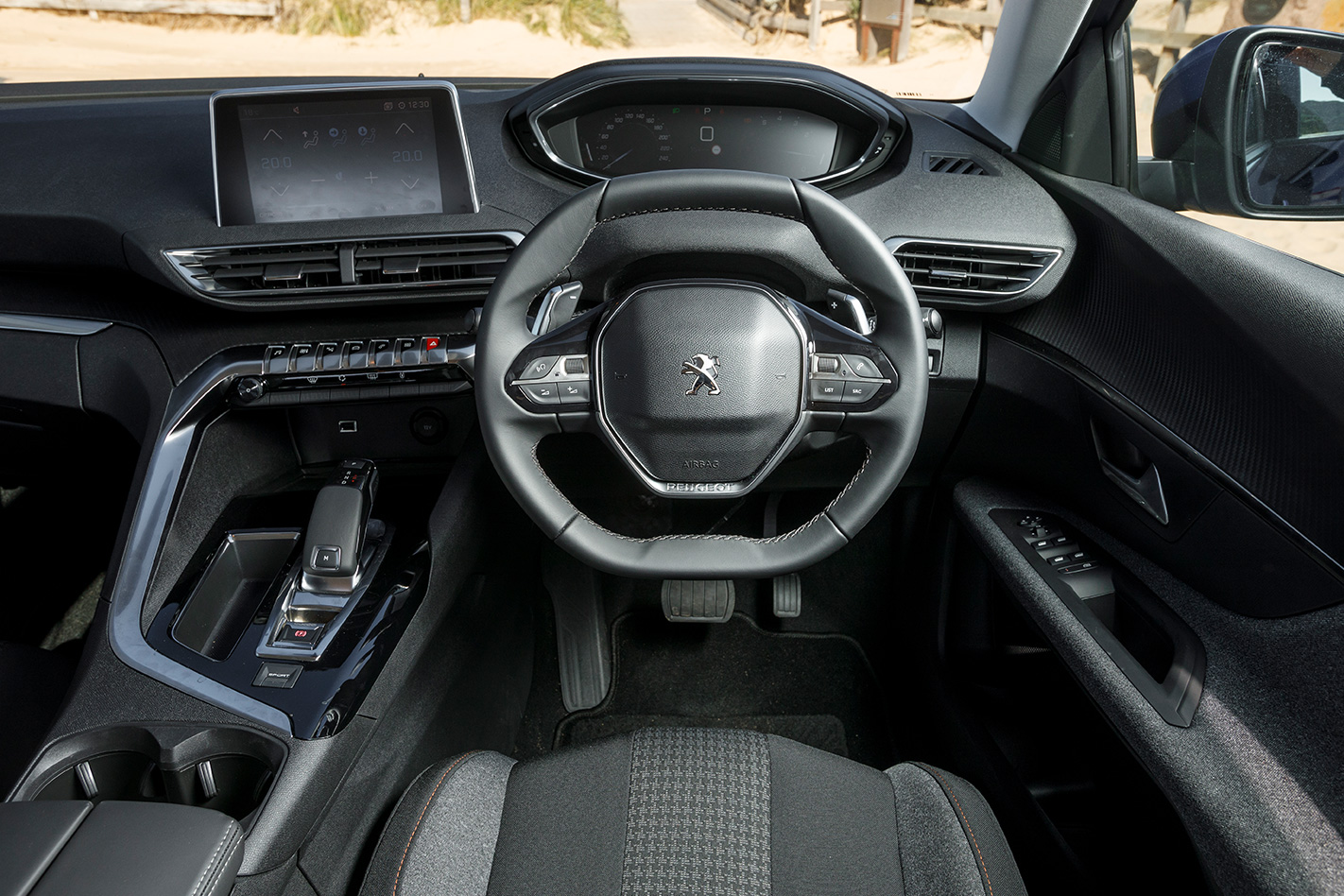
On the other hand, we’d happily recommend the Qashqai, and we can see why the 11-year-old formula remains so popular today. But the Nissan deserves a much better powertrain.
The buying public’s high esteem for the Qashqai might translate to market leadership among this SUV clique, but the Skoda and Peugeot are so much more than the left-field alternatives that their sales figures might suggest.
Separating the Karoq and the 3008 is a question of priorities, for the Skoda’s irrefutably longer list of standard features, substantially lower base pricing and rear-seat versatility must be weighed against the roomier Peugeot’s greater performance, economy, handling, ride and refinement. It’s also cheaper in the specification tested.
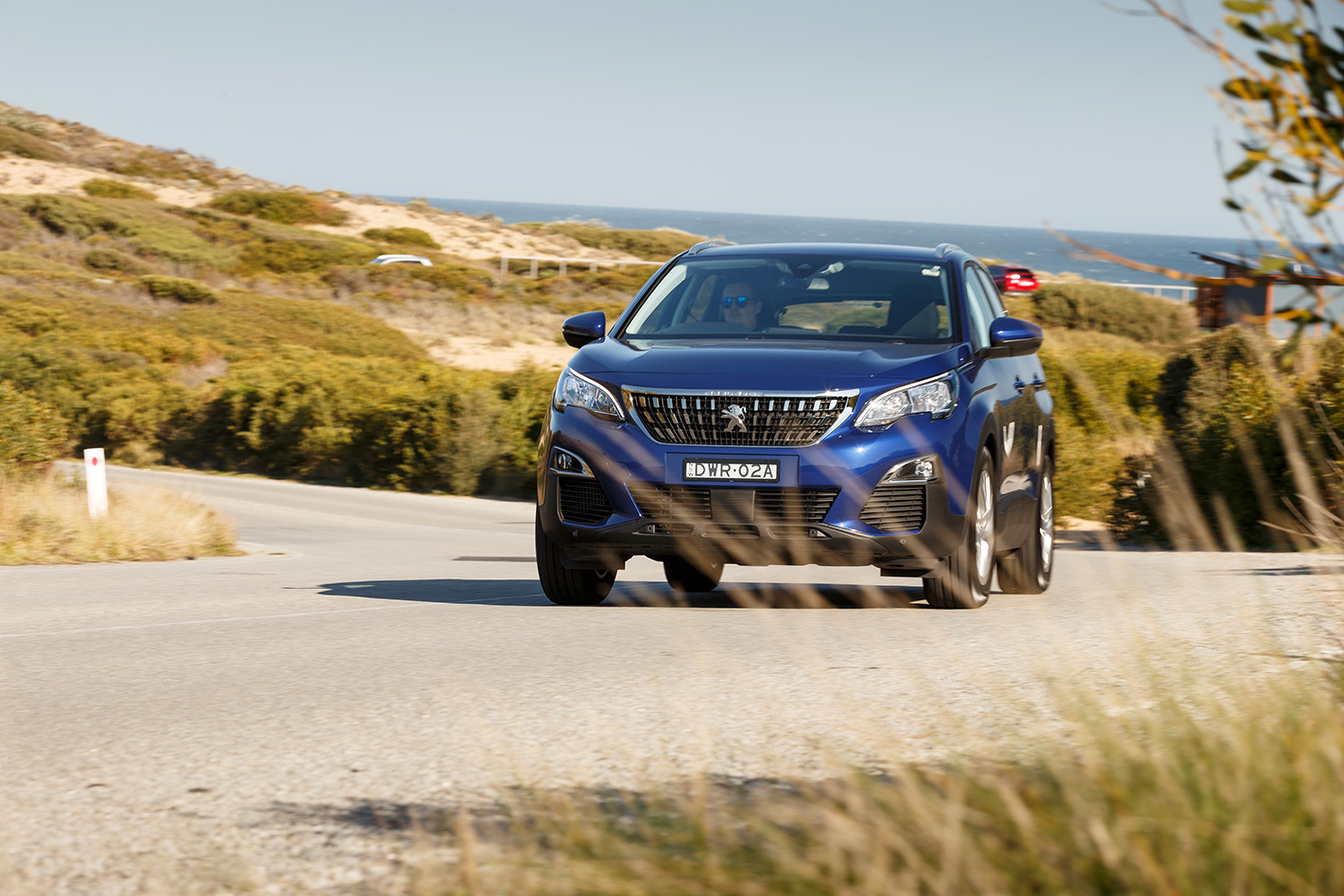
The French SUV ultimately has the edge over the capable Czech. Close as the two Euros are, our comparo revealed one more, final fun fact. The Peugeot 3008 is one of those rare cars that is greater than the sum of its parts.

